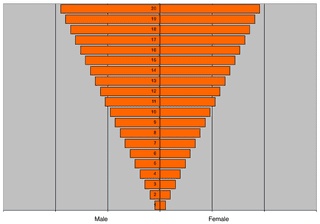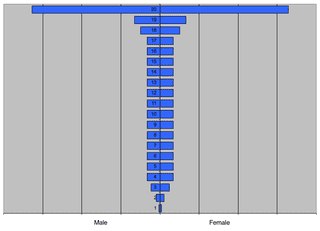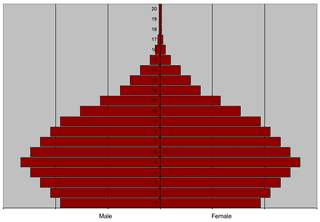Do your supporters look like nails, carrots or beetroots?
Recency, Frequency and Value are the mainstays of a successful segmentation strategy.
You can use values, geo-demographics, regression and even snake oil to try and improve your targeting of appeals, but at the end of the day, the long-term use of RFV can make the biggest difference to both expenditure and income.
It's effective because it helps identify patterns of behaviour, rather than simply describing the person who is giving.
And it's behaviour that's the best predictor of how a donor will respond to an appeal. Knowing that someone has given the second prompt amount on your last three Christmas mailings is worth much more than knowing that they are a member of the National Trust, living in a £450,000 house in Sevenoaks who nips off to church each Sunday after reading The Observer in bed.
And of all aspects of donor behaviour, recency is probably the most powerful indicator of potential. It's also a great way to measure the health of your donor file.
A while ago, working with Bluefrog's old head of data planning, Adam Waller, we created three recency based profile snapshots to help demonstrate typical patterns of support to help charities develop strategies to increase their income.
I've reproduced them here in a simplified form. Just to make them look visually attractive, each profile is based on a history of twenty appeals. The top of the chart is when the supporters were first recruited. The present month is at the bottom. I've kept equal numbers of male and female supporters. In reality, however, most files will contain more female supporters.
Nails
Having a nail shaped supporter file isn't great. The majority of donors in this profile give just the once and that's it. You are left with a small core that donate whilst the majority simply clutter up your database.
The problem you face with nail donors, is a lack of engagement. You have their name, contact details and even a gift, but considering them a supporter is simply delusional.
Nail shaped donor profiles are often acquired via a dependence on highly emotional recruitment channels such as face to face or TV. When these supporters are moved to a standard donor programme without any regard to their specific needs, many of them might as well be deleted as it would save wasting money on supporter magazines and warm appeals that will simply be thrown away.
If you are not going to put hard marketing effort into tackling the Bergstrom Effect, the best hope for someone on a nail shaped file is that they give via a direct debit which they are too busy to cancel.
You engage a nail shaped file by:
- Recognising current donor development communications aren't working.
- Moving the focus in communications from talking about the charity to talking about the donor.
- Not guessing what your donors need. Ask them.
- Remembering what your donors want and showing them you have listened to them.
- Acting very quickly in cementing the relationship by showing them what their gifts have done. Each day without reinforcing that they have done the right thing increases your failure rate.
Carrots
 The Carrot typifies the shape of the average cash file. Adrian Sargeant did a study a few years ago that showed that 50% of cash supporters never gave a second gift. The charity files he looked at slowly shrunk to the point that just 8% of donors were still giving after 5 years. It's a pattern that we are finding demonstrated in cash files to the present day.
The Carrot typifies the shape of the average cash file. Adrian Sargeant did a study a few years ago that showed that 50% of cash supporters never gave a second gift. The charity files he looked at slowly shrunk to the point that just 8% of donors were still giving after 5 years. It's a pattern that we are finding demonstrated in cash files to the present day.
Carrot shaped donor profiles decline slower that nails, but they still decline. They are more likely to be acquired via direct mail and press, but they still need to be engaged before they develop a level of commitment to your charity.
The task for a fundraiser working with a carrot shaped file is also to move donors through a communication programme designed to build a sense of involvement with the charity.
The tactics for managing a carrot shaped file are similar to those for nail shaped files. In this case however, you have more time to act. Though these donors are not your greatest advocates, good, well targeted, relevant appeals will work. These donors are just the sort of people who might enjoy supporting you. They simply don't know it yet. By implementing a donor needs strategy, you should be able to turn your carrots into beetroots.
Beetroots (upside down)
The beetroot shaped supporter file is the one to aim for. Its fat belly shows that the majority of donors have given very recently with just a small number making up the tiny root who have lapsed.
As far as health goes, this is a fantastic position to be in.
These donors don't need to be marketed to. They represent a file of great supporters who care about what you do and want you to succeed. People on the beetroot shaped file simply require good service so another charity can't win them away.
Rather than think of ways to market to them, look at how you can reward them or let them know how important they are to you. Great service is about treating them specially – taking them out of the general mailing programme and creating communications that work for them.
Again, as with every donor, try and take the guesswork out of this by finding out what the donor wants. When someone is as valuable to you as a beetroot, you should pick the telephone up and speak to them.
RFV is a powerful system and can become addictive when you see the savings and additional income it generates but as Bluefrog's head of data planning, Richard Hughes, points out:
"It's an essential tool, but adhering too strictly to RFV can mean you overlook potential in other parts of your file.
At the end of the day, you need an integrated approach that develops prospects as well as generating income from your most valuable supporters. RFV is a huge part of the answer to better fundraising, but we must not depend on it to solve every problem we face."
Tags In
Related Posts
1 Comment
Comments are closed.
The Essentials

Crack the Code to Regular Giving: Insights, Strategies, and a Special Giveaway!

‘Tis Halloween. Keep to the light and beware the Four Fundraisers of the Apocalypse!

Why do people give? The Donor Participation Project with Louis Diez.

A guide to fundraising on the back of a postcard

What does the latest research tell us about the state of fundraising?








Hi Andrew
Thanks for the comment. I agree with what you write on your blog. Money is just one way to gauge engagement, but very a very powerful one. Getting a fan on facebook or follower on twitter is close to worthless unless you have a strategy to engage. I’m following the summer of social good @mashable at the moment. i’ve been speaking to @adamhirsch about ways to engage people beyond the RT and follow. It’s going to be interesting to see what happens.
Best
Mark